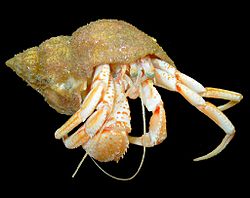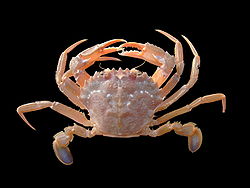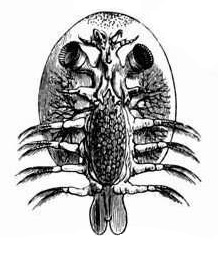
There are 1,774 species of crustaceans recorded in Ireland. [1] [2] [3] [4] [5] [6] [7] [8] [9]
Contents
- Class Branchiopoda (water fleas, etc.)
- Order Anomopoda
- Order Ctenopoda
- Order Haplopoda
- Order Onychopoda
- Class Malacostraca
- Order Leptostraca
- Order Stomatopoda
- Order Amphipoda
- Order Bathynellacea
- Order Cumacea (hooded shrimp, comma shrimp)
- Order Euphausiacea
- Order Decapoda
- Order Isopoda
- Order Mysida (opossum shrimps)
- Order Tanaidacea (tanaids)
- Class Maxillopoda
- Order Arguloida
- Order Misophrioida
- Order Calanoida
- Order Kentrogonida
- Order Apygophora
- Order Cyclopoida
- Order Harpacticoida
- Order Mormonilloida
- Order Poecilostomatoida
- Order Siphonostomatoida
- Order Monstrilloida
- Order Scalpellomorpha
- Order Scalpelliformes
- Order Sessilia (acorn barnacles)
- Order Porocephalida
- Order Platycopioida
- Class Ostracoda (seed shrimps)
- Order Myodocopida
- Order Halocyprida
- Order Podocopida
- See also
- References
- External links
Crustaceans are arthropods of the subphylum Crustacea. Most are aquatic, such as shrimp, barnacles, lobsters, crayfish, krill, but some are also adapted for land living, such as woodlice and crabs.


































